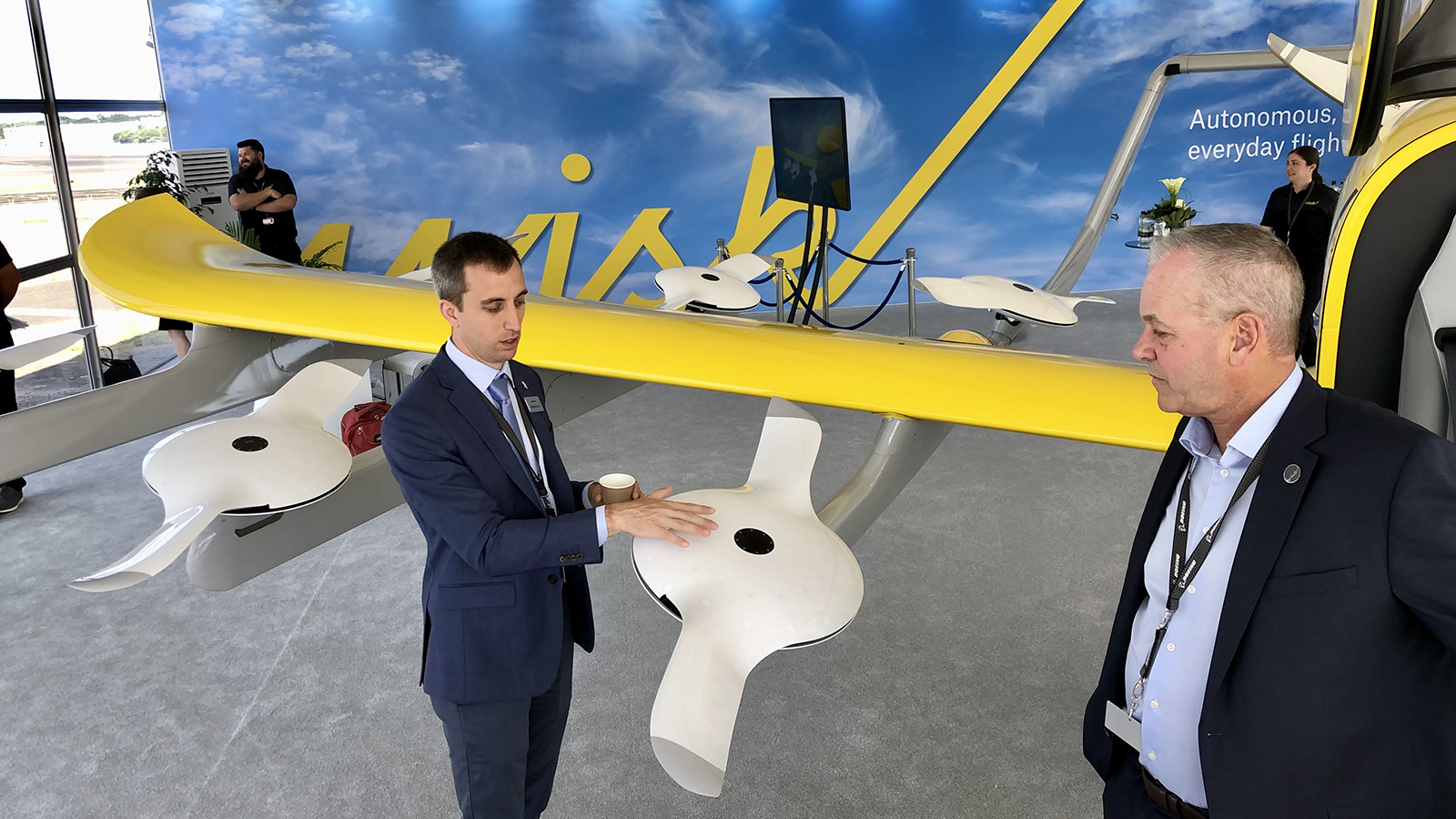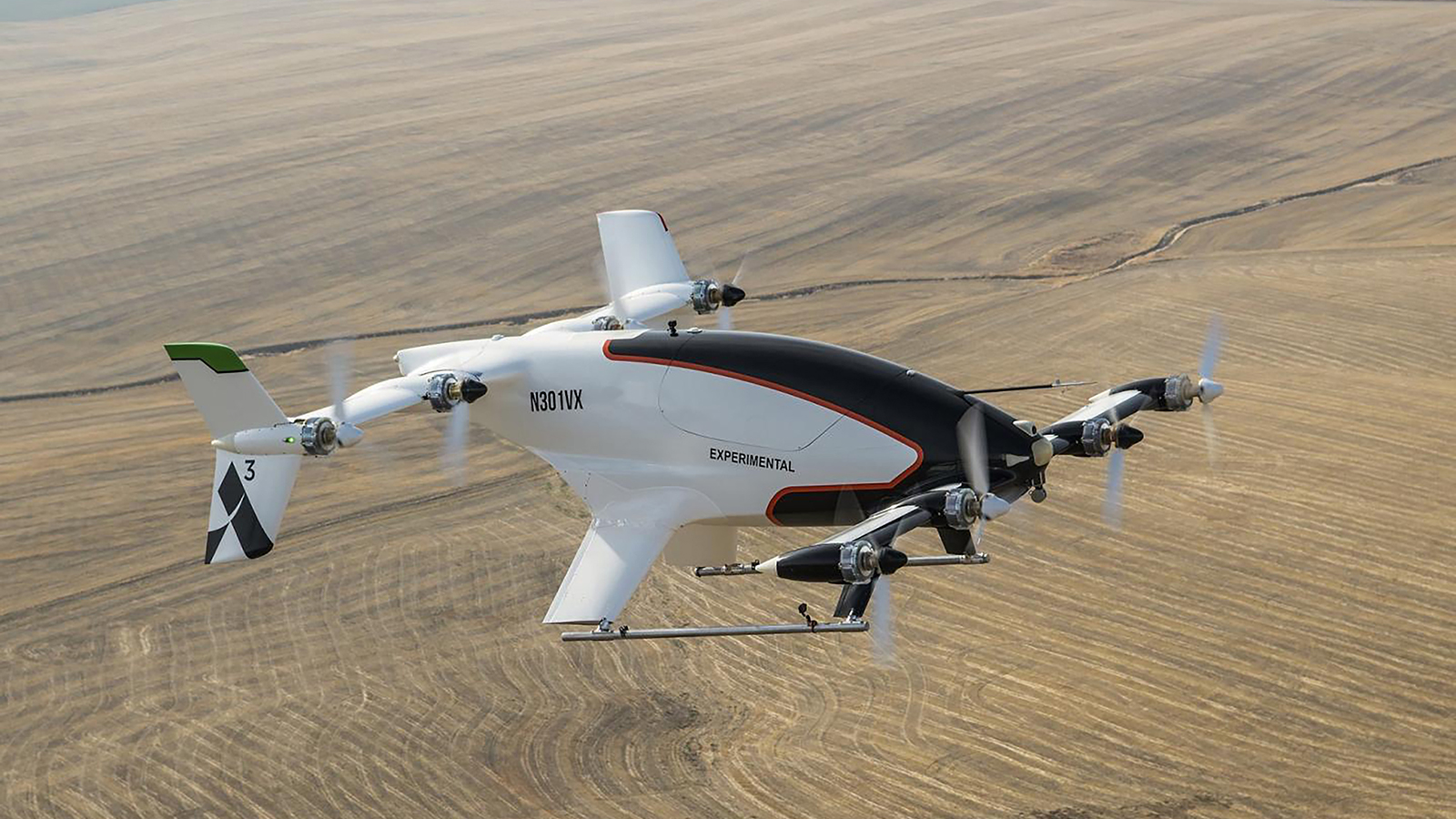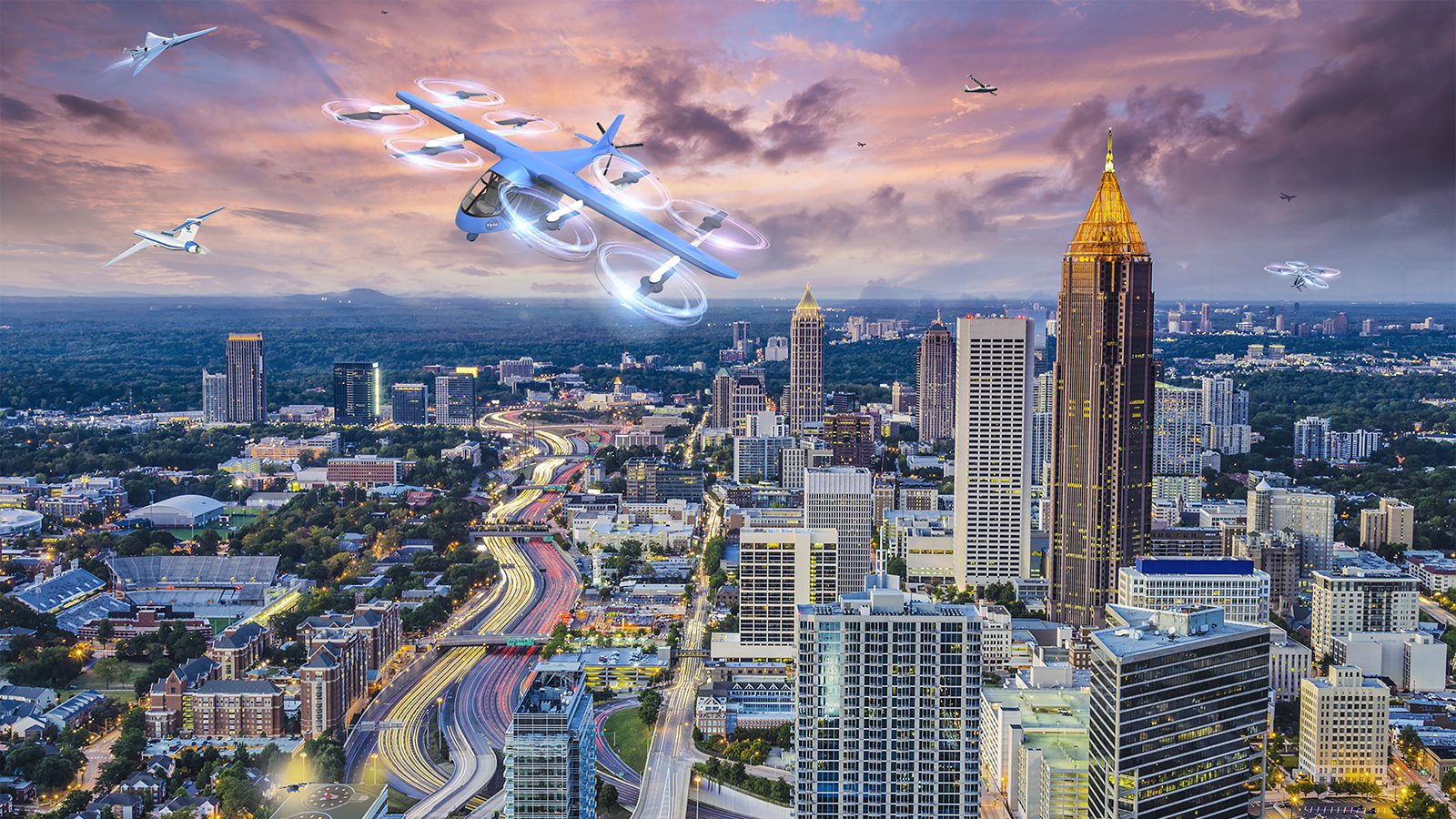Stay Up to Date
Submit your email address to receive the latest industry and Aerospace America news.
Once dominated by startups, the emerging air taxi industry has attracted the attention of traditional aerospace companies that have invested millions of dollars. Some have also begun working on their own concepts for these small, electric passenger aircraft. Even if AAM never achieves the billion- or trillion-dollar annual valuations predicted by analysts, Glenn McDonald and Martha Neubauer of the AeroDynamic Advisory consulting firm believe the Airbuses and Boeings will still reap the benefits.
Glenn McDonald is a principal at AeroDynamic Advisory. He holds bachelor’s and master’s degrees in aerospace engineering from the University of Michigan.
Martha Neubauer is an associate at AeroDynamic Advisory. She holds a bachelor’s degree in chemical engineering and a master’s in industrial and operations engineering, both from the University of Michigan.
The idea of ferrying passengers and cargo around in areas inaccessible by today’s aircraft is so compelling that dozens of new companies have been created in the last decade with the goal of revolutionizing urban and regional transportation via small electric aircraft. These companies have generated a lot of buzz among the general public and outside investors — advanced air mobility startups raised a combined $2.5 billion in 2021 through special purpose acquisition companies. Despite this, AAM remains a polarizing topic in the aerospace industry. While outside investors and media are enthusiastic about the concept, there are serious concerns about the viability of “air taxi” business models as well as the technical feasibility of these novel aircraft designs meeting the lofty performance claims of designers. Many experts within the industry expect failures as certification timelines get delayed and funding runs dry.
These predictions have not deterred incumbent aerospace behemoths including Airbus, Boeing, Embraer and Rolls-Royce from entering this previously startup-dominated field with targeted investments and sometimes air taxi concepts of their own. While it is easy to downplay their interest in AAM as marketing with little substance, AAM provides these original equipment manufacturers with interesting, headline-generating projects to attract and retain talent as well as a practical way to accelerate development of technologies that will be important in their core markets in the coming decades.
Attracting young workers
The competition for talent in the aerospace industry has been tough for years, even before the covid-19 pandemic, and aerospace companies have had to get creative to attract and retain top talent. Pandemic-driven layoffs and early retirements have only exacerbated labor challenges. Traditionally, aerospace was a high-paying industry with some of the most cutting-edge technology development in the world. Engineers of all types flocked to the industry for its relative stability and the chance to work on products that “connect, protect, and inspire” the world — to steal a former Boeing slogan. Now, aircraft and engine OEMs face stiff competition outside the industry from the technology sector with its higher wages, and within the industry from the glut of future mobility startups with their promises of disruptive technology.

OEMs have been able to fend off competition from the tech industry for some time with the appeal of working on something that flies, but the disparity in salary has become so great that many engineers are willing to make the trade between their passion for aviation and higher compensation. The lack of clean-sheet development work in commercial aviation doesn’t help. Boeing faces the worst competition from the technology sector with Amazon, Google and Microsoft right in its backyard in the Seattle metropolitan area. According to AeroDynamic Advisory’s LinkedIn analysis, there are 1,300 former Boeing employees currently working for Amazon. Amazon also has over 500 active software engineering job postings in Seattle — equal to about one-third the total number of software engineers Boeing has in the area. Revived enthusiasm in the space industry, led by the rise of commercial space companies like Blue Origin and SpaceX, hasn’t helped the brain drain from traditional aviation either. Boeing lost approximately 3,200 engineers and technicians at its Seattle hub between early 2020 and mid-2021, according to a Bloomberg report. Boeing recognizes this problem and has conducted out-of-sequence raises for union-represented engineers in the region, but executives also know they must do more.
Engineers who don’t want to leave the industry but are looking for more interesting development work now have ample opportunities at AAM and alternative propulsion startup companies. These companies promise to change the future of transportation, and most top talent would rather contribute to the next step forward than sustain legacy aircraft production. Whether these promises can be kept is uncertain, but nonetheless the appeal pulls talent away from traditional aerospace companies.
OEMs can fight both sources of talent competition by investing in AAM and related future mobility projects to fulfill engineers’ passion for cutting-edge development. Even though the salaries OEMs can offer for this work may not be as high as the technology sector, the excitement of working on a potentially disruptive technology within their industry may tip the trade in favor of aerospace and away from higher-paying tech jobs. After all, if engineers have already decided they want to work on AAM, they will go to a startup if OEM players are not involved.
Being involved in AAM doesn’t only help an OEM attract and retain talent within that area, but it also has a knock-on effect for other positions. If graduating engineering students see that a traditional OEM is on the forefront of a new area of development in the industry, they may be more attracted to working there even if they’re hired to work in a different division. They may hope that one day they can change roles and in the meantime will enjoy the benefit of working for a stable company that is not at risk of dissolving within a few years. One example of this is Boeing’s $450 investment in California AAM startup Wisk Aero. Even though Boeing’s involvement in Wisk is primarily as an arm’s-length investor, it gives the impression to current and prospective employees that Boeing is a company looking toward the future and not stuck in the technology of 50 years ago.
Staying on the cutting edge
Beyond workforce engagement and retention considerations, OEMs are investing in AAM to accelerate development of technologies that they can apply to their core aerospace and defense businesses. AAM demonstrators represent a relatively modest investment for large OEMs like Airbus, Boeing and Embraer, and they present an opportunity to address the challenges of new technologies outside of the normal program development cycle. As a bonus, AAM offers the chance to focus on the key areas of autonomy and aircraft electrification. Even if the AAM market does not materialize, the OEMs’ investment may contribute to advancements including new approaches to aircraft certification that will pay dividends for their future products.
While the dream of fully autonomous passenger or cargo-carrying aircraft is unlikely to be realized in the near future, increased autonomy will help address the pilot shortage, one of the major challenges facing the industry. A July analysis from consultancy Oliver Wyman estimated that the global airline industry could be facing a net deficit of over 80,000 pilots by 2032 absent increased recruiting or relaxed training regulations. This shortfall is one of the key factors limiting the speed at which air travel recovers post-covid. The introduction of air taxis will only exacerbate this problem by introducing new demand for pilots. While most AAM startups are designing air taxis that would be manually piloted initially, they are introducing novel control systems and pilot aides in the cockpit to simultaneously increase safety and reduce pilot training requirements, with the long-term goal of transitioning to autonomous flight.

The simplified vehicle operations concept is one way that startups are trying to reduce training requirements for their vehicles. SVO aims to replace today’s cockpits with simplified controls and interfaces to augment pilot capabilities, while ultimately leaving decision making in human hands. These technologies will be critical in AAM but also could be used to eventually enable single-pilot operations in commercial airlines, which currently require at least two pilots for redundancy. Such thinking could be one reason Boeing has invested in Wisk, one of the few AAM startups planning on going straight to autonomous flight when it begins passenger service in the late 2020s. By proving these technologies on smaller AAM aircraft, OEMs can accelerate their development for larger passenger aircraft.
AAM technology can also assist the air transport industry in meeting its commitment to aggressively cut carbon emissions in the coming decades, with an ultimate goal of reaching net-zero by 2050. Battery-
electric and hybrid-electric aircraft concepts are among the wide array of technology and policy levers needed to meet this goal, and the introduction of air taxis would drastically increase the number of electric aircraft in service. While electric and hybrid-electric propulsion will initially be limited to air taxis and small aircraft in the 9-19 seat size range, it has the potential to expand to larger aircraft sizes as battery technologies improves.
The electric vertical takeoff and landing configurations in the works by many air taxi builders are some of the most demanding applications for battery-powered aircraft due to the high amount of power required on takeoff. While these eVTOLs may not ultimately be technically or commercially successful, their development is a fertile proving ground for advancing battery technology.
Observers may think that traditional aerospace OEMs are trying to leverage the AAM investment bubble solely to boost their stock price and for marketing, but these are practical reasons and potential benefits that greatly outweigh the risk that this market may never be financially viable. Despite the cynicism, targeted and limited investments in AAM projects are worth doing.
Related Posts
Stay Up to Date
Submit your email address to receive the latest industry and Aerospace America news.




